By Dr. Uttam Saikia
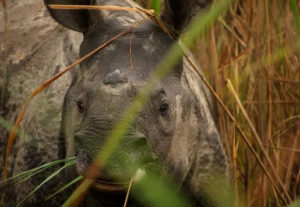 Every year on the 22nd September, Rhino lovers and conservationists across the world observe World Rhino Day, to create awareness on the five species of surviving Rhinoceros. What started as a regional event in Africa when the World Wide Fund for Nature, South Africa celebrated the first Rhino Day in September, 2010, it assumed global proportions in the subsequent years through the efforts of two conservationists Lisa Jane Campbell of Zimbabwe and Rhishja Cota-Larson of the United states. This day celebrates the five species of Rhino that are still surviving on the face of Earth and also to highlight the dangers they face and to work towards eliminating global demand for Rhino horn by debunking myths associated with Rhino horns.
Every year on the 22nd September, Rhino lovers and conservationists across the world observe World Rhino Day, to create awareness on the five species of surviving Rhinoceros. What started as a regional event in Africa when the World Wide Fund for Nature, South Africa celebrated the first Rhino Day in September, 2010, it assumed global proportions in the subsequent years through the efforts of two conservationists Lisa Jane Campbell of Zimbabwe and Rhishja Cota-Larson of the United states. This day celebrates the five species of Rhino that are still surviving on the face of Earth and also to highlight the dangers they face and to work towards eliminating global demand for Rhino horn by debunking myths associated with Rhino horns.
The five species of Rhino
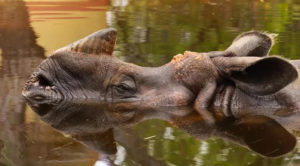 Rhinoceros (Greek word meaning nose-horned) are some of the primitive largest mammals on Earth, the adults weighing over 1000 kg in all the species. There are five species of Rhinos surviving in Asia and Africa besides numerous species that had gone extinct in the past. The most familiar Indian Rhino is found in parts of India and Nepal; majority of them living in selected protected areas of Assam along the Brahmaputra Valley. The African White Rhino is the largest species of Rhino and the five countries in the southern part of Africa namely South Africa, Namibia, Zimbabwe, Kenya, and Uganda hold almost the entire population of this species. It is estimated that about 18000 individuals of
Rhinoceros (Greek word meaning nose-horned) are some of the primitive largest mammals on Earth, the adults weighing over 1000 kg in all the species. There are five species of Rhinos surviving in Asia and Africa besides numerous species that had gone extinct in the past. The most familiar Indian Rhino is found in parts of India and Nepal; majority of them living in selected protected areas of Assam along the Brahmaputra Valley. The African White Rhino is the largest species of Rhino and the five countries in the southern part of Africa namely South Africa, Namibia, Zimbabwe, Kenya, and Uganda hold almost the entire population of this species. It is estimated that about 18000 individuals of  this species remain in the wild now. The African black Rhino is native to eastern and southern Africa and the population estimates hovers around 5300-5600 individuals spanning over several countries. The Javan Rhino is one of the rarest mammals confined exclusively to Ujung Kulon National Park in Java Province of Indonesia. The current population estimate stands at mere 75 individuals and is categorized as critically endangered. The Sumatran Rhino or Asian two-horned Rhino is the smallest of all Rhino species and is known from a few locations in Sumatra and in East Kalimantan province of Indonesia. The total number of individuals is also estimated at a precarious 80 individuals and is another critically endangered species.
this species remain in the wild now. The African black Rhino is native to eastern and southern Africa and the population estimates hovers around 5300-5600 individuals spanning over several countries. The Javan Rhino is one of the rarest mammals confined exclusively to Ujung Kulon National Park in Java Province of Indonesia. The current population estimate stands at mere 75 individuals and is categorized as critically endangered. The Sumatran Rhino or Asian two-horned Rhino is the smallest of all Rhino species and is known from a few locations in Sumatra and in East Kalimantan province of Indonesia. The total number of individuals is also estimated at a precarious 80 individuals and is another critically endangered species.
In dire straits
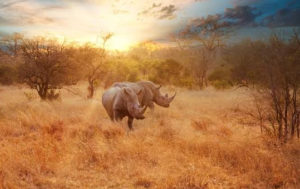 Despite a healthy population and widespread distribution in the past, Rhinos are now one of the most threatened animals on Earth. Presently, the total number of individuals of all the five species of Rhinos together is well less than 30,000, down from an estimated 5,00,000 individuals at the beginning of the 20th Century. Once abundant and widespread, they were pushed to a corner and now surviving precariously in certain pockets. For example, the Indian one-horned Rhino was once distributed in the plains of Pakistan and northern India, Nepal, Bhutan, along the Brahmaputra valley, Bangladesh and possibly Myanmar and Southern China. Due to loss of habitat accentuated by climate change, their range gradually shrunk and to the extent that by the 20th century they remained confined to certain areas of
Despite a healthy population and widespread distribution in the past, Rhinos are now one of the most threatened animals on Earth. Presently, the total number of individuals of all the five species of Rhinos together is well less than 30,000, down from an estimated 5,00,000 individuals at the beginning of the 20th Century. Once abundant and widespread, they were pushed to a corner and now surviving precariously in certain pockets. For example, the Indian one-horned Rhino was once distributed in the plains of Pakistan and northern India, Nepal, Bhutan, along the Brahmaputra valley, Bangladesh and possibly Myanmar and Southern China. Due to loss of habitat accentuated by climate change, their range gradually shrunk and to the extent that by the 20th century they remained confined to certain areas of  Nepal, Uttar Pradesh, West Bengal and Assam. To make the matters worse, the surviving Rhinos faced extreme hunting pressure especially during the. Hunting for sport was a common practice for the colonial British officials and Indian rhinoceros was relentlessly hunted to the point of near extinction. One will be surprised to know that the famous Kaziranga National Park in Assam which is a current stronghold of Indian Rhino held only 12 individuals in the early 20th Century. But strict implementation of conservation
Nepal, Uttar Pradesh, West Bengal and Assam. To make the matters worse, the surviving Rhinos faced extreme hunting pressure especially during the. Hunting for sport was a common practice for the colonial British officials and Indian rhinoceros was relentlessly hunted to the point of near extinction. One will be surprised to know that the famous Kaziranga National Park in Assam which is a current stronghold of Indian Rhino held only 12 individuals in the early 20th Century. But strict implementation of conservation 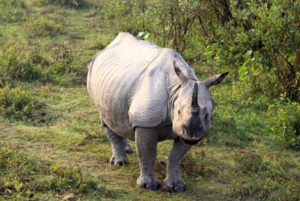 measures helped rebounding its population to the present level only to face the serious threat of poaching for the horn that feeds the market for Chinese Traditional Medicine. It may be mentioned that the Rhino horn is a compact outgrowth made of Keratin (the same material as our hairs, nails). Rhino horn has been used extensively in traditional Chinese medicine for its purported medicinal value for curing a large array of diseases and also for aphrodisiac properties. In the black market, Rhino horns are an extremely valuable commodity selling for lakhs of dollars for a kilogram. This high demand for Rhino horn has driven severe rhino poaching throughout Africa and Asia leading to a situation like near extinction of some species in the past. Scientific proofs for any of these medicinal claims of Rhino horns are nonexistent still poaching goes unabated and Rhinos face continual existential threat.
measures helped rebounding its population to the present level only to face the serious threat of poaching for the horn that feeds the market for Chinese Traditional Medicine. It may be mentioned that the Rhino horn is a compact outgrowth made of Keratin (the same material as our hairs, nails). Rhino horn has been used extensively in traditional Chinese medicine for its purported medicinal value for curing a large array of diseases and also for aphrodisiac properties. In the black market, Rhino horns are an extremely valuable commodity selling for lakhs of dollars for a kilogram. This high demand for Rhino horn has driven severe rhino poaching throughout Africa and Asia leading to a situation like near extinction of some species in the past. Scientific proofs for any of these medicinal claims of Rhino horns are nonexistent still poaching goes unabated and Rhinos face continual existential threat.
Rhino Conservation: present and future
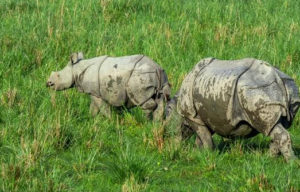 Among others, the US based nonprofit International Rhino Foundation (IRF) is at the forefront of Rhino conservation efforts throughout the world. Through strong local partnership, the foundation provides financial assistance and scientific guidance for various conservation programmes aimed at protecting and propagating rhinos worldwide. On the eve of World Rhino Day every year, IRF releases their flagship State of the Rhino Report providing current population estimates and trends, as well as key challenges and conservation developments for the five surviving rhino species in the world. The report for the year 2021 was a mixed bag, sharing some positive news amidst reports of continued poaching and unabated threat to the Rhinos worldwide.
Among others, the US based nonprofit International Rhino Foundation (IRF) is at the forefront of Rhino conservation efforts throughout the world. Through strong local partnership, the foundation provides financial assistance and scientific guidance for various conservation programmes aimed at protecting and propagating rhinos worldwide. On the eve of World Rhino Day every year, IRF releases their flagship State of the Rhino Report providing current population estimates and trends, as well as key challenges and conservation developments for the five surviving rhino species in the world. The report for the year 2021 was a mixed bag, sharing some positive news amidst reports of continued poaching and unabated threat to the Rhinos worldwide.
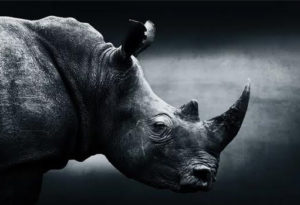 Advancement of science has always been a boon for conservation efforts worldwide and Rhinos too are benefiting from scientific management and translocation programmes. Rhino translocation programmes have been successfully implemented in many countries which involve introduction of healthy Rhinos to suitable areas where they have been extirpated. It aims to establish a new viable population of Rhino which also acts as insurance against cataclysmic events occurring in certain areas affecting the Rhino population there. In 2021, which is possibly the biggest Rhino translocation effort so far, 30 endangered African White Rhinos were flown into Akagera National Park in Rwanda from South Africa. Similarly, under the aegis of the Indian Rhino Vision 2020; a joint programme of Assam Forest Department in partnership with many other organizations, a large number of Greater One Horned Rhinoceros were translocated from Pobitora Wildlife Sanctuary and Kaziranga National Park to Manas National Park, a former stronghold of the species that had lost its entire population due to poaching. It is hoped that a viable and genetically diverse population of Rhino will be established in Manas National Park again.
Advancement of science has always been a boon for conservation efforts worldwide and Rhinos too are benefiting from scientific management and translocation programmes. Rhino translocation programmes have been successfully implemented in many countries which involve introduction of healthy Rhinos to suitable areas where they have been extirpated. It aims to establish a new viable population of Rhino which also acts as insurance against cataclysmic events occurring in certain areas affecting the Rhino population there. In 2021, which is possibly the biggest Rhino translocation effort so far, 30 endangered African White Rhinos were flown into Akagera National Park in Rwanda from South Africa. Similarly, under the aegis of the Indian Rhino Vision 2020; a joint programme of Assam Forest Department in partnership with many other organizations, a large number of Greater One Horned Rhinoceros were translocated from Pobitora Wildlife Sanctuary and Kaziranga National Park to Manas National Park, a former stronghold of the species that had lost its entire population due to poaching. It is hoped that a viable and genetically diverse population of Rhino will be established in Manas National Park again.
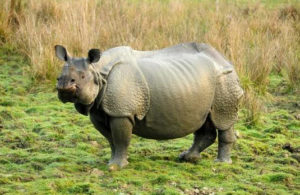 Advancements in Assisted Reproductive Technology (ART) continue to show promise for rhino conservation. Experts are banking on this technology to save Northern White Rhino, a subspecies of White Rhino which is practically extinct as only two female individuals live in Ol Pejeta Conservancy in Kenya under round the clock armed protection. In a phenomenal success, scientists have reported that from these two females, they could extract a few eggs which were fertilized in the laboratory with preserved sperms of deceased northern white
Advancements in Assisted Reproductive Technology (ART) continue to show promise for rhino conservation. Experts are banking on this technology to save Northern White Rhino, a subspecies of White Rhino which is practically extinct as only two female individuals live in Ol Pejeta Conservancy in Kenya under round the clock armed protection. In a phenomenal success, scientists have reported that from these two females, they could extract a few eggs which were fertilized in the laboratory with preserved sperms of deceased northern white 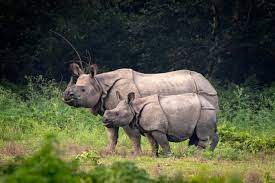 rhino bulls. A few of the eggs grew to early stage embryos which were frozen and later will be implanted into southern white Rhino surrogates. Scientists are also contemplating applying these techniques to Sumatran Rhinoceros, another species on the brink of extinction. There is no easy answer to ensure survival of these endangered species. But the dedicated efforts of conservationists, scientists and government agencies worldwide are on to ensure that this precious natural heritage continues to thrive on Earth for days to come.
rhino bulls. A few of the eggs grew to early stage embryos which were frozen and later will be implanted into southern white Rhino surrogates. Scientists are also contemplating applying these techniques to Sumatran Rhinoceros, another species on the brink of extinction. There is no easy answer to ensure survival of these endangered species. But the dedicated efforts of conservationists, scientists and government agencies worldwide are on to ensure that this precious natural heritage continues to thrive on Earth for days to come.
The author is a scientist at Zoological Survey of India, Shillong



